Choosing a First Gun : 5 Critical Tips You Need to Know
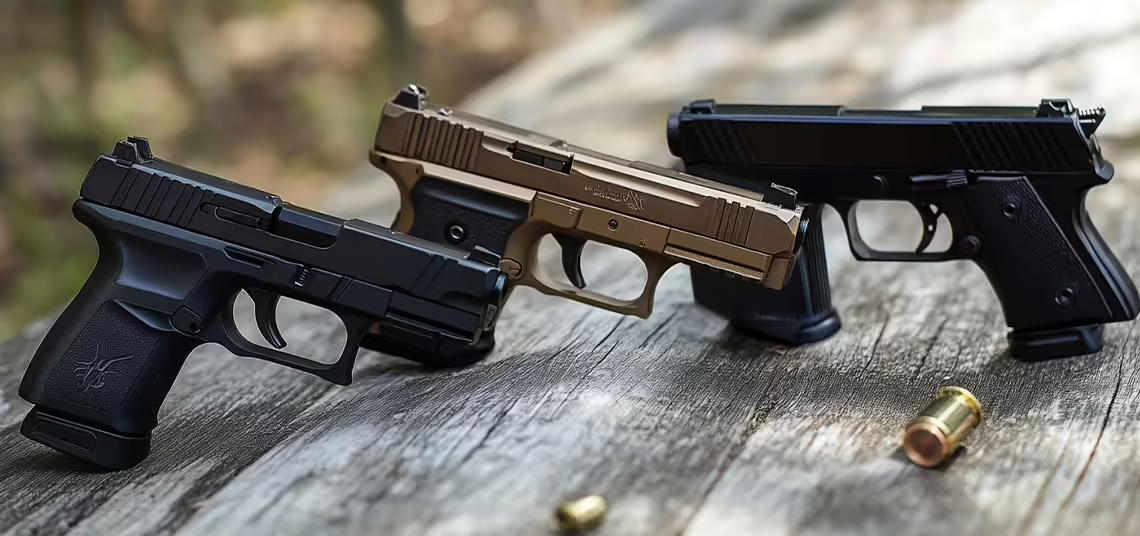
Choosing a first gun is an important and careful decision for anyone considering gun ownership. Making the right choice is crucial to ensure both your safety and a suitable experience for your intended purpose. Many factors should be considered during the gun selection process, which is why acting with knowledge and guidance is essential. Knowing some basic tips can help you make the best decision in this process by identifying the gun that best meets your needs, clarifying your purpose, and understanding different options.
1. Identify Your Needs and Purpose
Choosing a first gun starts with clearly defining your needs and the intended purpose of the firearm. Guns are designed for various purposes, so identifying your purpose is vital for making the right choice. Whether for personal defense, sports shooting, or collection purposes, different needs will influence the type, size, and features of the gun you choose. Clarifying your purpose during the selection process will make it easier to find the right gun model.
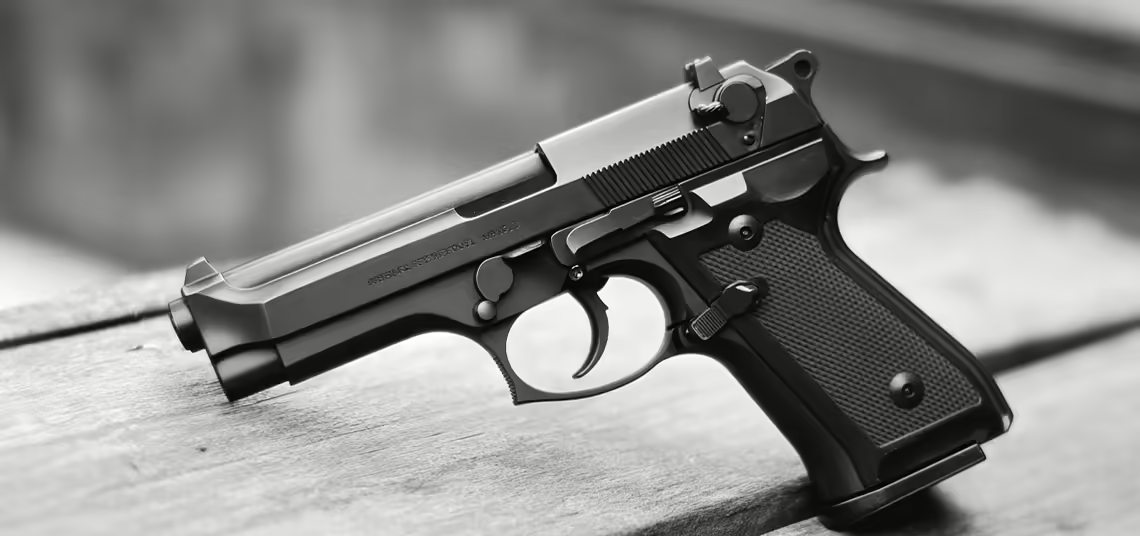
Choosing a Gun for Self-Defense
If you’re looking for a firearm for self-defense, there are key factors to consider when choosing a first gun, such as compactness, portability, and reliability. A portable handgun or a lightweight rifle provides quick access and easy carrying for emergencies, whether at home or outside. In defense firearms, a quick trigger mechanism and low recoil enable the user to respond swiftly and effectively in dangerous situations. Additionally, a firearm that is easy to carry provides confidence and comfort to the user. Strong safety mechanisms and user-friendly operation are also crucial when selecting a self-defense gun.
Choosing a Gun for Sports and Target Shooting
If you’re seeking a gun for sports and target shooting, choosing a first gun should involve considering performance focused on precision. Firearms used for this purpose typically have precise aiming capabilities, adjustable trigger mechanisms, and ergonomic designs. Rifles and handguns used for sport shooting can be equipped with specialized scopes or optical sights that enhance aiming accuracy. These types of guns are designed to deliver top performance at shooting ranges or competitions. Additionally, their lightweight and balanced design allows the shooter to use them comfortably for extended periods. Guns ideal for sports and target shooting enable users to improve their shooting skills.
Suitable Gun Models for Collectors
If you’re looking to choose a gun for collection purposes, examining models with historical and aesthetic value is essential when choosing a first gun. Collectible firearms often include limited editions, special series, or pieces of historical significance. These guns stand out with their unique designs and historical backgrounds. Suitable guns for collections are distinguished by their rare features, artistic value, and historical importance. These guns are usually made of high-quality materials and finished with meticulous craftsmanship. Collectors value these firearms not only for their aesthetic appeal but also as a heritage of history and culture.
2. Understand the Differences Between Gun Types
Understanding the differences between various gun types is a critical step in choosing a first gun. Each type of gun has unique advantages and areas of use. Knowing these differences helps you choose the gun that best suits your needs. Handguns, revolvers, semi-automatic and fully automatic firearms, as well as various types of rifles, offer different experiences and functionalities to gun users. Therefore, determining which gun type will best meet your needs is the most important step in the selection process.
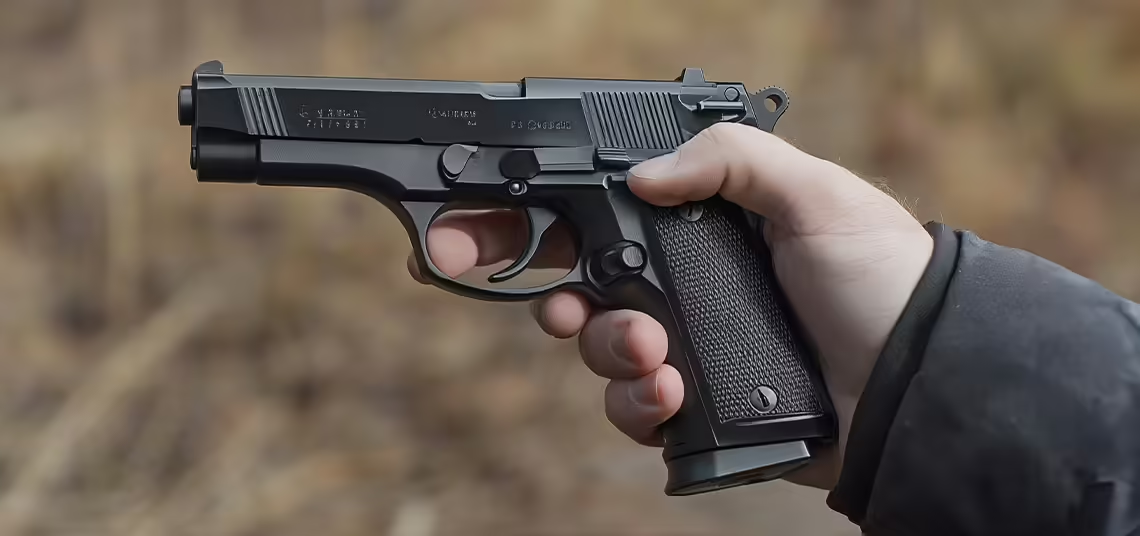
Differences Between Handguns and Revolvers
Handguns and revolvers are two fundamental types of firearms commonly chosen for personal defense and security purposes. Handguns operate with removable magazines that store the bullets, while revolvers have a mechanism where bullets are stored in a rotating cylinder. Understanding the differences between a handgun and a revolver is important in choosing a first gun.
Handguns offer faster magazine changes and generally have a higher bullet capacity, making them ideal for emergencies and scenarios requiring continuous firing. Revolvers, on the other hand, are known for their simplicity and durability. They usually require less maintenance and are less likely to jam. Since the mechanism of revolvers is less complex, they are simpler and more reliable to use. Each gun type has its unique advantages and disadvantages; thus, it’s important to consider your purpose when making a choice.
Semi-Automatic vs. Fully Automatic Guns
Semi-automatic and fully automatic guns differ based on their firing mechanisms. Understanding the differences between these two types of guns will help you make the right choice when choosing a first gun. Semi-automatic guns fire one bullet per trigger pull. After firing, the next bullet is automatically loaded into the chamber, ready for the next shot. This feature makes semi-automatic guns popular for both defense and sporting purposes.
Fully automatic guns, however, fire continuously as long as the trigger is pulled. This feature makes fully automatic guns suitable for military and certain special police units. However, such guns are generally restricted in civilian use. While automatic firing provides an advantage in scenarios requiring rapid and intense firepower, controlling the bullets can be challenging, leading to high ammunition consumption. For personal use, semi-automatic guns usually offer a more suitable and controlled option.
Pump-Action Shotguns and Other Rifle Types
Pump-action shotguns are a type of firearm frequently preferred for hunting and home defense. Understanding how pump-action shotguns work and how they differ from other types of rifles is essential when choosing a first gun. Pump-action shotguns have a mechanism that must be manually reloaded after each shot. These guns are known for their reliability and powerful firing capabilities. They are typically used in hunting, especially for birds and small game animals. Additionally, pump-action shotguns are effective in close-range defense due to their spread-shot ammunition that covers a wide area.
Other types of rifles include semi-automatic rifles and double-barreled shotguns. Semi-automatic rifles automatically load a new bullet after each trigger pull, allowing for rapid fire. These rifles are popular for both hunting and sports shooting. Double-barreled shotguns, which have two barrels, are available in single or double-trigger versions. Double-barreled shotguns are highly regarded among hunters and are often used for hunting. When choosing a rifle, factors such as the gun’s intended use, ammunition type, and shooting range should be considered.
3. Pay Attention to Gun Ergonomics and Portability
Choosing a first gun is not solely based on technical features and firing power. Ergonomics and portability are critical factors that directly affect user experience. How the gun fits in your hand, how comfortable it is to use, and how easily it can be carried when necessary are all important considerations when making the right choice. An ergonomic design and appropriate size ensure the gun can be used more effectively and safely.
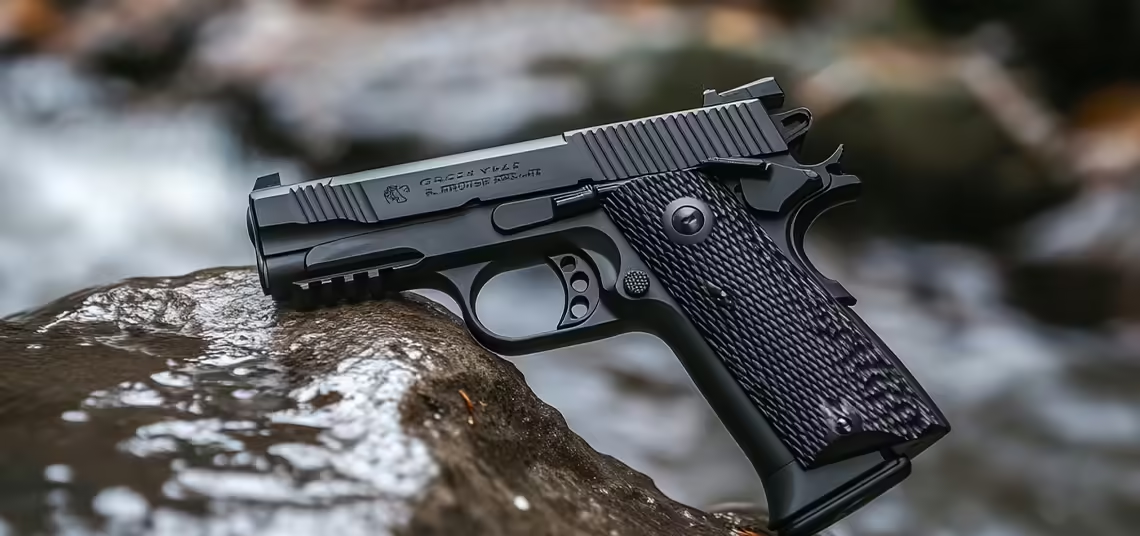
Ease of Handling and Grip
Ease of handling and grip is an important evaluation criterion when choosing a first gun. A gun that fits comfortably in your hand is crucial to maintaining control during firing. A good grip helps balance the gun’s recoil, enhancing aiming and shooting accuracy. Grip surfaces covered with non-slip materials increase both comfort and safety. An ergonomically designed grip provides a user experience that suits different hand sizes. For first-time gun buyers, trying out different models to find the one that fits their hand structure best ensures a successful start.
Importance of Gun Weight and Size
Gun weight and size are other important factors to consider when choosing a first gun. Weight directly impacts the gun’s portability and long-term use. Lightweight guns make carrying easier, while heavier models can offer a more stable shooting experience. However, an overly heavy gun can be tiring to carry and use over extended periods. Size affects both portability and the gun’s ability to remain concealed. Compact and lightweight guns are ideal for everyday carry and quick access. On the other hand, larger guns often offer higher ammunition capacity and better aiming capability. Striking a balance between weight and size when choosing a first gun optimizes user comfort and performance.
Carrying Comfort and Concealment
Carrying comfort and concealment are important considerations when selecting a gun. Opting for a model that is easy to carry positively impacts user experience. For a gun intended for concealed carry, it should be easy to hide under clothing and not cause discomfort during daily activities. Compact and lightweight guns provide an advantage in concealed carry, allowing quick access when needed. Additionally, selecting a suitable holster helps ensure the gun is carried safely and comfortably. The ergonomics and portability of a gun offer comfort in daily use while also providing advantages in terms of security and concealment. Considering these factors when choosing a first gun enhances both safety and comfort.
4. Learn About Calibers and Types of Ammunition
Understanding calibers and ammunition types is among the most critical factors when choosing a first gun. Different calibers offer various advantages and disadvantages depending on their intended use. Ammunition type directly affects the gun’s power, recoil, and accuracy. Therefore, choosing the right caliber will provide an experience that suits your intended use and shooting skills.
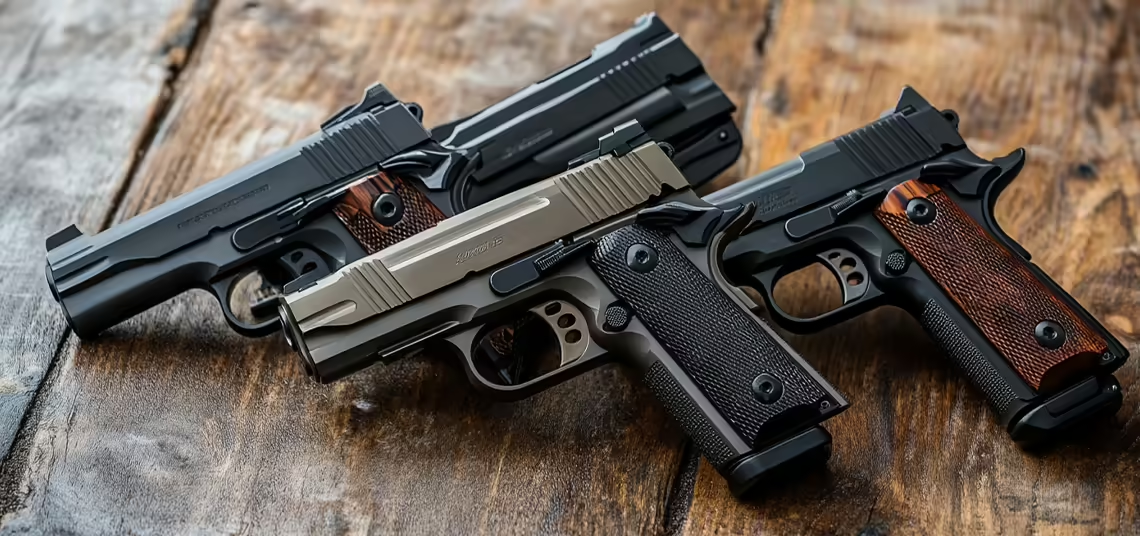
Advantages and Disadvantages of Different Calibers
Gun caliber refers to the diameter of the bullet and the gun’s barrel. Understanding the advantages and disadvantages of various calibers is important when choosing a first gun. Smaller calibers generally offer less recoil and better control, making them a good option for beginners. For instance, calibers like .22 LR, with low recoil and affordable ammunition, are ideal for practical shooting. However, these calibers may lack sufficient stopping power for personal defense.
Larger calibers, such as .45 ACP or .357 Magnum, offer greater stopping power and damage capacity, making them suitable for defensive use. However, these calibers have higher recoil and may be challenging to control. Therefore, when choosing your first gun, ensure the caliber choice aligns with your intended use.
Power, Recoil, and Accuracy
Balancing power, recoil, and accuracy is essential when determining the right caliber to choose a first gun. As the caliber size increases, the bullet’s stopping power also increases, but so does the recoil. A powerful caliber can enhance the ability to stop an aggressor but may make it difficult to control the shot and decrease accuracy.
For example, the 9mm caliber offers a popular middle ground for many users. It provides adequate stopping power while maintaining manageable recoil, enhancing accuracy. On the other hand, calibers like .40 S&W or .45 ACP offer higher stopping power but require a more careful approach regarding recoil management. Gun users are advised to assess their ability to handle recoil and choose a suitable caliber for optimal performance.
Ammunition Prices and Availability
Ammunition prices and availability are practical considerations when choosing a first gun. Depending on the caliber, ammunition prices can vary significantly. Common calibers, such as 9mm, are generally more affordable and easier to find on the market. This helps keep costs down when practicing shooting.
Less common calibers, such as .357 Sig or .44 Magnum, are typically more expensive and have limited availability, increasing costs and making regular practice more challenging. Gun users should consider ammunition costs and availability when choosing their first gun, evaluating the long-term shooting costs and practice opportunities. The right caliber and ammunition choice optimize performance and offer a budget-friendly shooting experience.
5. Test the Gun by Doing Trial Shoots
Conducting trial shoots is crucial in the process of choosing a first gun. The most effective way to experience a gun’s ergonomics, balance, trigger pull, and recoil is by using it firsthand. This experience helps you understand how a gun feels, responds, and how comfortable it is to use. Testing the gun through trial shoots is essential to choose the most suitable gun and ensure a safe and enjoyable shooting experience.
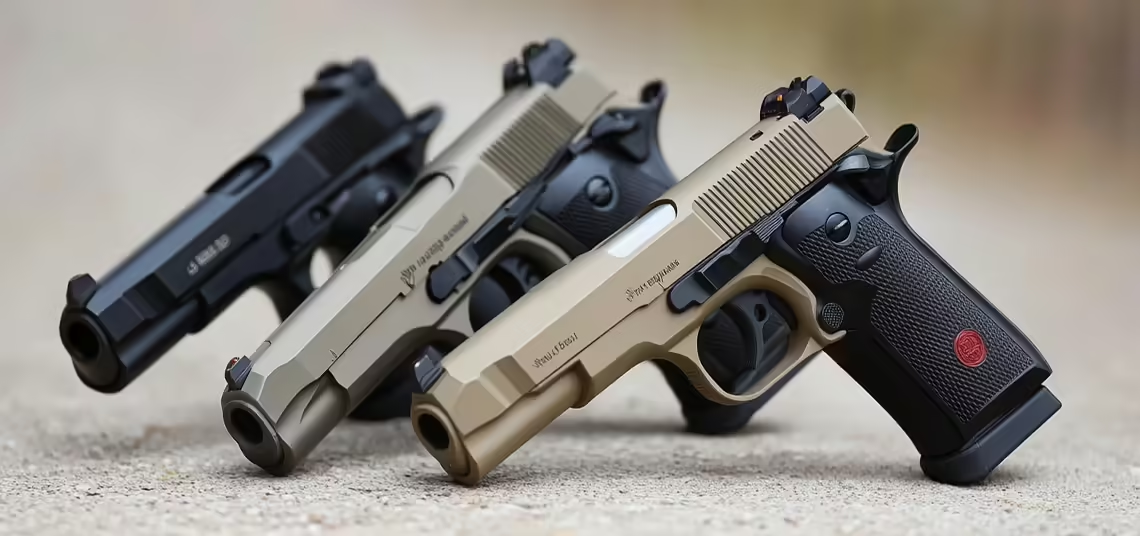
Testing Guns at Shooting Ranges
Testing guns at shooting ranges is an ideal approach when choosing a first gun. Many shooting ranges allow you to rent different gun models for testing. This lets you evaluate the gun’s size, weight, trigger sensitivity, and overall performance. At shooting ranges, you can try various types of firearms, including handguns and rifles, and compare different calibers.
Gaining experience at ranges is also an excellent opportunity to improve your shooting skills. During trial shoots, you can get help from an instructor to learn proper grip and aiming techniques, contributing to making an informed decision when choosing a first gun. At shooting ranges, you don’t just get to know the gun theoretically but also learn how to use it in practice.
Comparing Different Gun Models
Comparing different gun models through trial shoots offers a significant advantage in the process of choosing a first gun. Each gun model has unique features and feels. Brands like Glock, Sig Sauer, and Beretta offer different models that appeal to specific user groups. These models vary in weight, trigger pull, recoil, and grip, among other factors.
Trying multiple gun models helps you understand which features are important to you. You might prefer a model with a lighter trigger pull or one with lower recoil. Testing different guns allows you to understand these differences through experience. These comparisons could be one of the best investments you make when choosing a first gun.
Importance of Trial Shoots and First Impressions
The importance of trial shoots when choosing a first gun cannot be overstated. A gun’s technical specifications on paper may not fully reflect its real-life performance. Therefore, the first impressions you get when holding and testing a gun will be decisive in your decision-making process.
Pay attention to how the gun feels during trial shoots. Is the trigger pull comfortable? Is the recoil manageable? Does the gun balance well in your hand? Finding answers to these questions will guide you toward the right gun choice. First impressions are the most direct way to determine if a gun suits you. Therefore, trying out as many different gun models as possible and identifying your personal preferences is important for a safe and satisfactory shooting experience. Trial shoots enhance your shooting skills and boost your confidence in using a gun, ensuring you choose the right gun.
Choosing a first gun is crucial for ensuring safety, comfort, and performance. Selecting the gun that best meets your needs will make you feel secure and provide a more satisfying shooting experience. Making an informed decision by considering all the factors during selection will increase your long-term satisfaction. Understanding how guns feel through trial shoots is an effective way to make the right decision. Additionally, comparing different gun models allows you to find the most suitable option based on your personal preferences.
Using the right accessories during this process can also make a significant difference. Zibgrips offers a wide range of accessories to make your shooting experience more comfortable and safe. For more information and to discover accessories that meet your needs, visit the Zibgrips website. You can also get in touch with our expert team directly through the contact page, ask your questions, and get information about personalized solutions.
